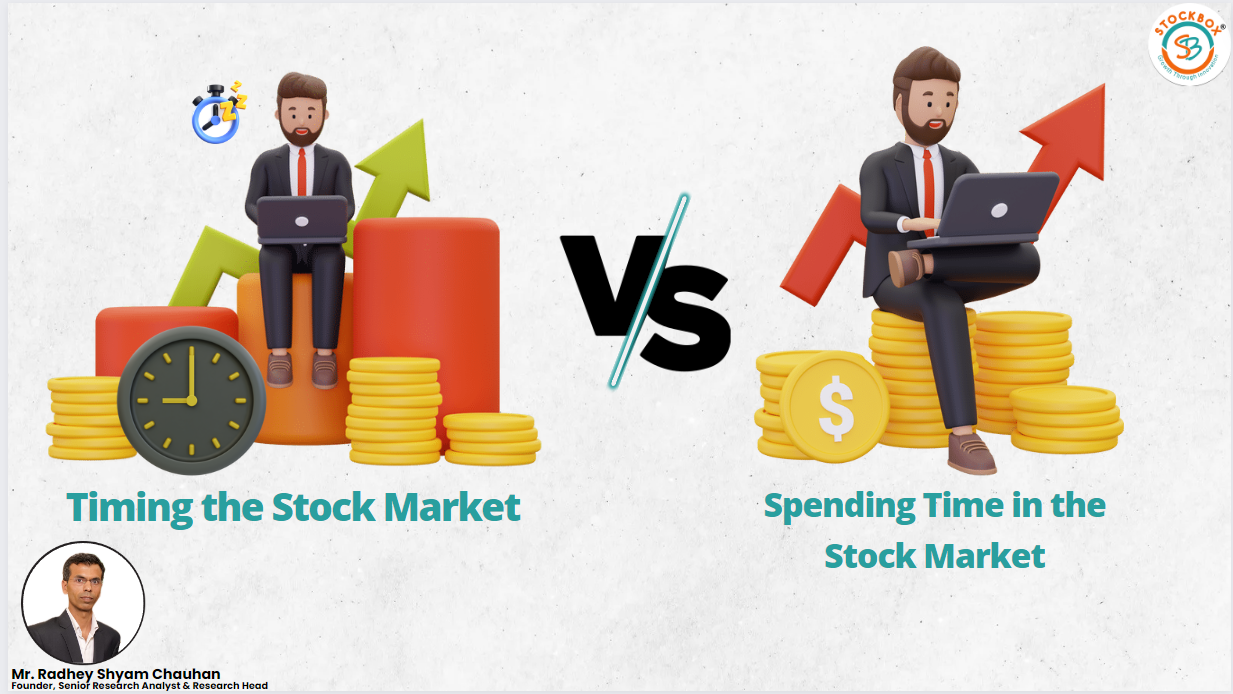In the tumultuous world of investing, two contrasting strategies often emerge: timing the stock market and spending time in the stock market. While both approaches aim to maximize returns, they employ vastly different tactics. Let’s delve into the intricacies of each strategy to discern their efficacy and potential pitfalls.
Timing the Stock Market
Timing the stock market involves attempting to predict the market’s movements and making buy or sell decisions accordingly. Proponents argue that by correctly identifying market trends, investors can capitalize on opportunities to buy low and sell high, thus maximizing profits. However, this strategy is fraught with challenges.
Firstly, accurately predicting market fluctuations is exceedingly difficult, if not impossible. The market is influenced by a myriad of factors, including economic indicators, geopolitical events, and investor sentiment. Attempting to time these variables with precision is akin to navigating a labyrinth blindfolded.
Moreover, timing the market requires impeccable timing—entering and exiting positions at precisely the right moments. Even seasoned investors struggle to consistently execute flawless market timing. One mistimed move could result in substantial losses, eroding any gains made through successful predictions.
Spending time in the stock market
On the other hand, spending time in the stock market adopts a long-term perspective, focusing on the fundamentals of investing rather than short-term fluctuations. This strategy entails buying and holding quality assets over an extended period, allowing time and compounding to work their magic.
By embracing a buy-and-hold approach, investors can benefit from the inherent upward trajectory of the stock market over time. History has shown that despite periodic downturns, the market has exhibited a long-term upward trend, rewarding patient investors who stay the course.
Furthermore, spending time in the stock market mitigates the stress and complexity associated with constantly monitoring market movements. Instead of fixating on short-term volatility, investors can adopt a more relaxed and disciplined approach, trusting in the resilience of the market over time.
Balancing Risk and Reward
While timing the stock market may offer the allure of quick gains, it often succumbs to the pitfalls of speculation and emotion-driven decision-making. In contrast, spending time in the stock market aligns with the principles of prudent investing—patience, diversification, and a focus on long-term growth.
In conclusion, the debate between timing the stock market and spending time in the stock market is not merely a matter of preference but a fundamental question of investment philosophy. While timing the market may appeal to those seeking rapid returns, it carries significant risks and requires a high degree of skill and luck. Conversely, spending time in the stock market offers a more reliable path to wealth accumulation, leveraging the power of compounding and the resilience of the market over time. Ultimately, investors must weigh the potential rewards against the inherent risks and choose the strategy that best aligns with their financial goals and risk tolerance.
By adopting a strategic approach rooted in fundamental principles, investors can navigate the complexities of the stock market with confidence and prudence, positioning themselves for long-term success.

